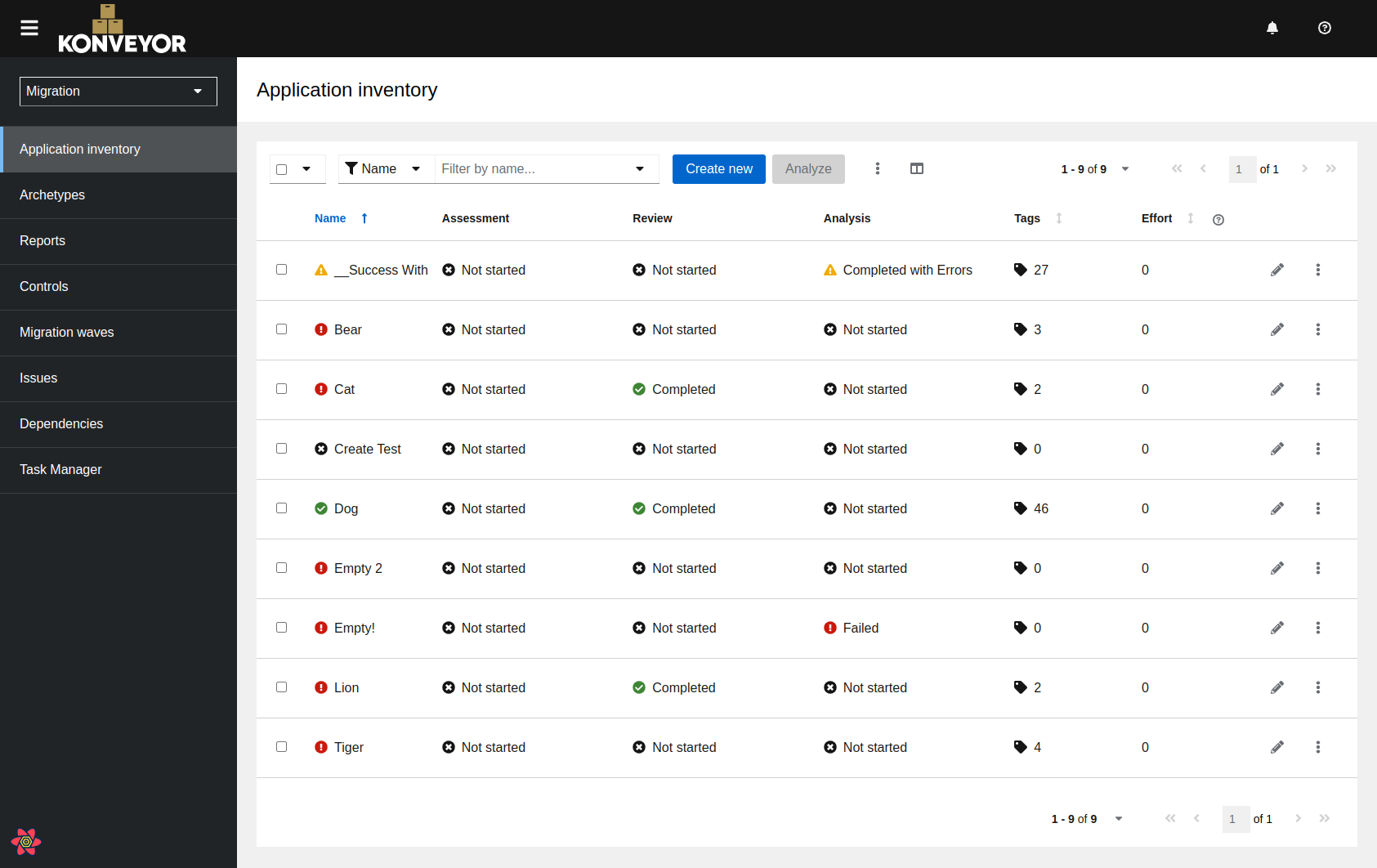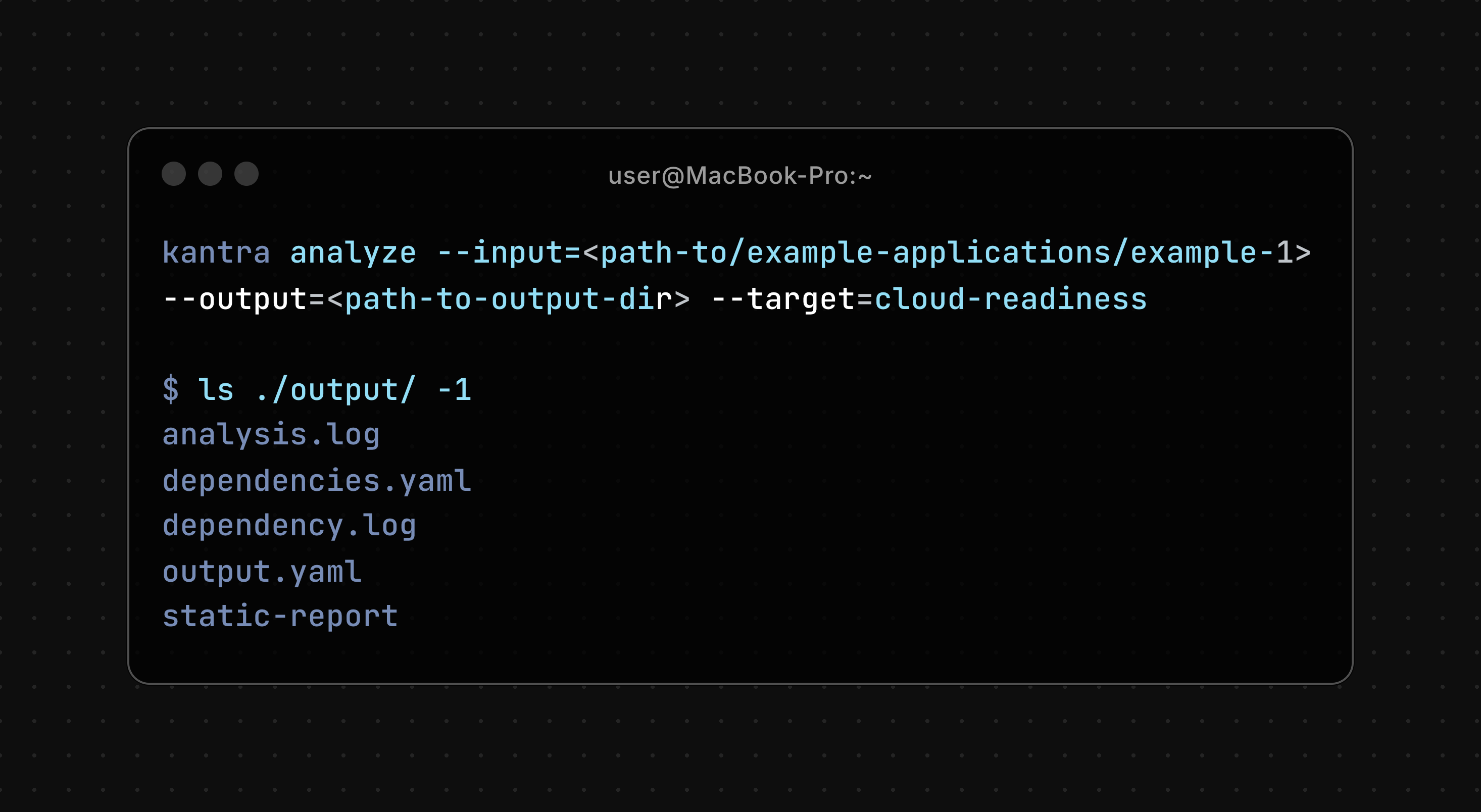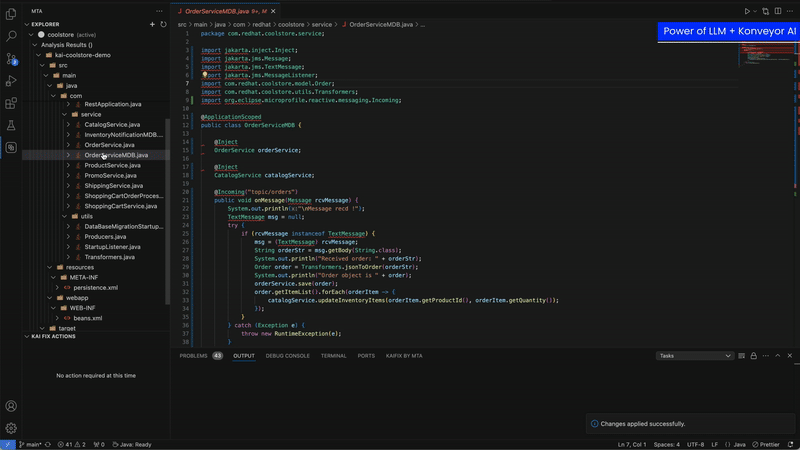
Accelerate application modernization
Konveyor is an open-source project that gives developers and platform teams visibility, analysis, and transformation tools to predictably re-platform and refactor legacy applications at scale for Kubernetes and cloud-native technologies.

Key components of Konveyor

Konveyor Hub
A hub for all your migration projects. View, categorize, and analyze your application landscape from a web console. Use it to build and manage a predictable, measurable migration plan.

Konveyor CLI
Kantra, an essential part of the Konveyor hub, performs Static code analysis for multiple languages, including Go, .Net, Node.js, and Java. Kantra can also generate assets for Kubernetes, enabling the replatforming of applications.

Konveyor AI
With more context comes more power. Konveyor AI combines Static code analysis with Generative AI. Seamlessly integrate LLMs into your modernization and refactoring journey.
Community Supporters



Recent Posts

Konveyor AI 0.1.0 is here!
After months of ideas, development, and feedback from early users and contributors, we're excited to share the first official release of Konveyor AI 0.1.0. Please download it and try it out in your local environment. Report your issues and feature requests, and contribute fixes and documentation if you can!

Incident Storage in Kai - A Deep Dive
A walkthrough of how incident data is leveraged in Konveyor AI's (Kai) workflow to improve the generation of results.
